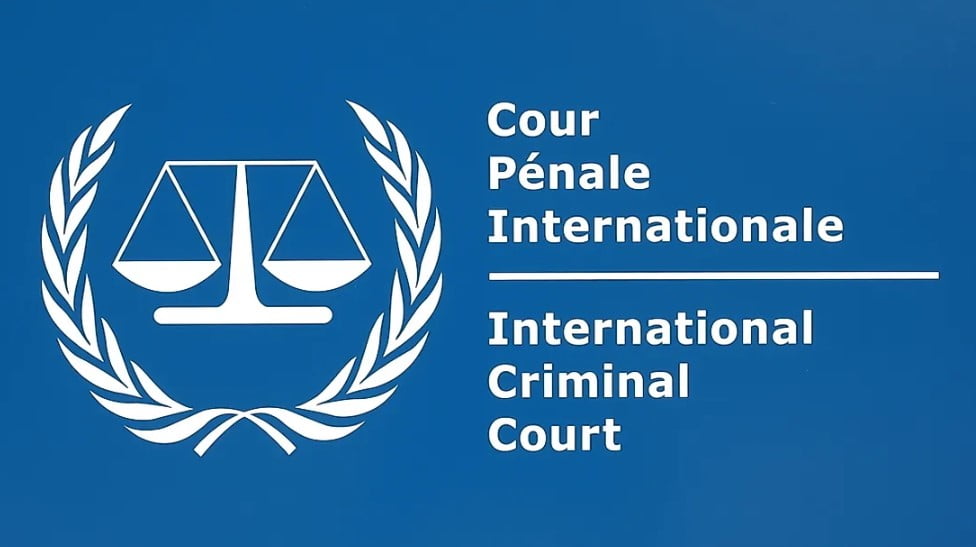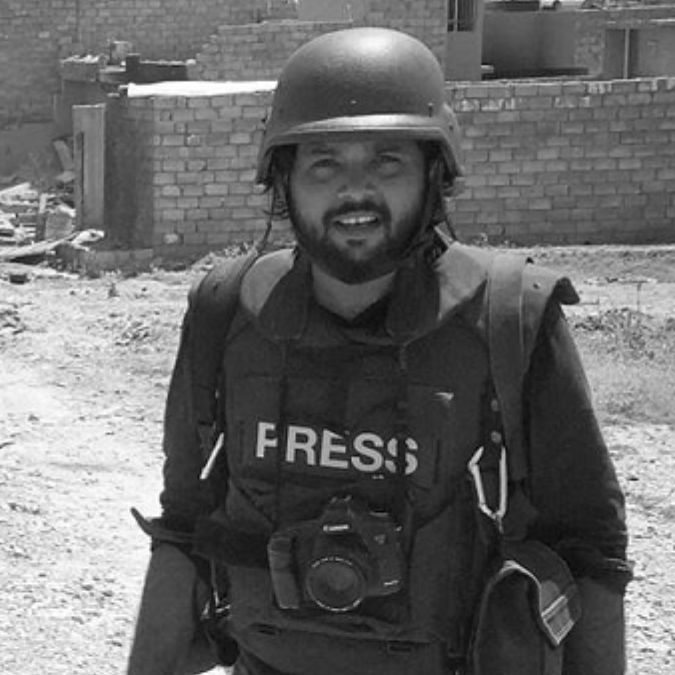Danish’s Story
Danish Siddiqui was a journalist who stood where the story was. His lens revealed the truth of refugee crises, pandemics, and wars, guided by empathy, clarity, and responsibility. On 16 July 2021, he was killed while reporting from Spin Boldak, Afghanistan. His death was first described as crossfire, later found untrue. What remain are troubling questions about preparation, protection, accountability, and the wider failures of a system meant to safeguard those on the frontlines.
The Parents’ Struggle
Since Danish’s death, his parents have sought clarity about what happened in Spin Boldak. They have asked questions about safety and responsibility, yet their appeals have met with silence. Despite his long service and recognition, the family has felt left alone in their search for truth. Letters and requests have brought no resolution, leaving them on a difficult journey marked by persistence, frustration, and unanswered questions that mirror the struggles of many families of frontline journalists.
A Universal Issue
Frontline journalists risk everything to report from the world’s most dangerous places, yet too often they are left to fend for themselves, valued more for their stories than their safety. When tragedy strikes, families face silence instead of support, and institutions rarely provide answers. Due diligence is inconsistent, and accountability is rare. Danish’s story reflects a wider failure: journalism relies on individual courage, but systemic protections remain fragile or missing, leaving truth-tellers vulnerable and families abandoned.
Why Justice Matters
Justice for Danish Siddiqui is not only about one family’s loss but about recognising the responsibility owed to every journalist who risks their life in pursuit of truth. When protection and accountability are absent, it undermines both those reporting and the societies that depend on their work. Justice is more than law; it is a moral duty to dignity, transparency, and remembrance. Seeking answers for Danish is part of a universal call to protect those who speak when others cannot.
Verified Findings
A Gruesome Death
What happened to Danish goes far beyond crossfire.
Media investigations and expert reviews have pieced together a disturbing account of Danish Siddiqui’s final hours. Far from the official description of crossfire, reports describe a sequence of capture, torture, execution, and mutilation. Each stage reveals unanswered questions and troubling details that continue to deepen the search for truth.
01
Captured and Tortured
Media reports state Danish was first injured in the initial crossfire and later captured alive while sheltering in a mosque. Witness accounts suggest he identified himself as a journalist and showed his press credentials, yet he was mistreated while in custody. These reports raise grave concerns about the brutality he endured before his killing.
02
Executed in Cold Blood
According to media investigations, Taliban commanders reviewed his identity and social media activity before issuing an order to silence him. Danish was then shot multiple times, dragged outside, and stripped of his protective gear. This sequence points to a deliberate execution rather than death in crossfire.
03
Riddled with
Bullets
Investigations documented that Danish’s body was struck by 12 bullets. Small entry points, multiple exits, and several bullets still lodged inside were noted. Gunshots were concentrated in his torso and back, suggesting close-range fire. These details raise critical doubts about the official narrative of crossfire and demand further clarity and accountability.
04
Crushed After
Death
Reports noted tyre marks across Danish’s face and chest, with crushing injuries to his head and torso. Evidence indicated a heavy vehicle, possibly a Humvee or SUV, ran over his body several times after his killing. These findings revealed visible signs of post-mortem mutilation, adding a chilling dimension to his death that has yet to be addressed.
Together, these findings reveal a sequence of brutality far beyond the official account. They underscore the urgent need for transparency, accountability, and protection for journalists who risk everything to bring truth from the frontlines.
Setting the Record Straight.
Myth vs Fact
1
Danish Siddiqui was
killed in
crossfire.
Evidence later showed his death was not a simple accident of war. Reports revealed troubling circumstances that went far beyond the initial account.
2
All safety protocols were thoroughly followed before his deployment
Serious questions remain about the preparation and protection provided. To this day, no clear answers have been given.
3
Family received institutional support in their legal efforts
Despite years of appeals, his parents have faced silence and frustration. They continue their struggle without meaningful support.
4
Raising these important questions is about assigning blame
It is about accountability, transparency, and protecting journalists. Seeking answers ensures future reporters are not left unprotected.
Challenging the Official Narrative
When the official story and documented evidence do not align, questions cannot be ignored.
What the Evidence Shows
Investigations suggest far more than uncertainty. Reports documented that Danish was captured alive, tortured, and executed. His body bore 12 bullet wounds and crushing injuries consistent with being run over by a vehicle. These findings cannot be dismissed as unknowable.
Why It Matters
Framing his death as unknowable silences evidence and leaves families without closure. Truth must not be abandoned to convenience.
What the Evidence Shows
Consent does not replace institutional duty of care. International safety standards stress that organisations must plan for evacuation, oversight, and risk management, not leave it entirely to the individual.
Why It Matters
Shifting responsibility to the journalist avoids accountability. Consent does not absolve negligence in preparation.
What the Evidence Shows
While no consultant can guarantee safety, their role is to anticipate risks and intervene in crises. None accompanied Danish into Spin Boldak, a district known for volatility.
Why It Matters
Admitting no consultant was present highlights a preventable gap in protection. Basic oversight was missing.
What the Evidence Shows
Mobile networks are unreliable in conflict zones. Standard safety practice includes satellite phones and GPS tracking, ensuring communication and location even during outages. Danish had only SIM cards.
Why It Matters
Without these tools, Danish was effectively unreachable once cut off. This left him isolated and vulnerable.
What the Evidence Shows
Relying on military staff for communication compromised both reliability and journalistic independence. Secure, independent channels are essential in conflict zones.
Why It Matters
Delegating communication put him at risk. Journalists need direct, secure tools under their control.
What the Evidence Shows
Journalists often seek embeds to access stories, but willingness to embed does not reduce an organisation’s obligation to ensure safety.
Why It Matters
Placing responsibility on Danish’s initiative avoids accountability. Duty of care remains with the institution.
What the Evidence Shows
Military briefings focus on tactical goals, not journalist safety. Without independent safety oversight, Danish had to make life-or-death decisions alone.
Why It Matters
Burdening the journalist with sole responsibility shifts accountability unfairly. Safety cannot be outsourced to chance.
What the Evidence Shows
Trauma is often unspoken. Experience and professionalism do not eliminate risk or emotional impact.
Why It Matters
Using silence as proof of invulnerability avoids responsibility. Institutions must act regardless of whether distress is voiced.
What the Evidence Shows
Despite claimed appraisals, Danish entered Spin Boldak without a consultant, satellite phone, GPS tracker, or evacuation plan. Paper assessments did not translate into protection.
Why It Matters
Assessments without action left him exposed. Safety planning must be practical, not theoretical.
Ignored Security Warnings, No Clear Action?
Advisories reportedly raised concerns. Clarity is lacking on response actions.
Was a Risk Assessment Conducted?
No publicly available documentation confirms a formal risk assessment process.
Why Was He Sent Back to the Field?
After an earlier RPG attack, the basis for continued deployment is unclear.
Lack of Protective Measures?
Information on protective planning for this assignment has not been disclosed.
Silence on Taliban Brutality?
No public statement has addressed post-death images or Taliban conduct.
The Bigger PICTURE
Journalism Under Threat
The death of a frontline journalist is never just a personal loss. It reflects how institutions respond to risk, and too often, how they fail. Reporters enter the most dangerous places to bring truth to the world, yet they are frequently sent without the safeguards, preparation, or accountability that should be standard.
Institutional Responsibility
International norms are clear: media organisations carry a duty of care when sending journalists into conflict. That duty includes risk assessments, protective equipment, secure communications, medical support, and evacuation planning. These are not extras. They are the baseline protections needed when lives are at stake.
Systemic Neglect
In reality, these measures are unevenly applied or entirely absent. When tragedy occurs, official accounts often present deaths as unknowable or unavoidable. Families are left without answers, and systemic failures are hidden behind silence or semantics.
“Duty of care is not optional — it is the minimum responsibility of every institution that sends reporters into danger.”

International CRIMINAL COURT
Call for Investigation
To the Office of the Prosecutor,
The Committee to Protect Journalists (CPJ), an independent, nonprofit organization that promotes press freedom worldwide, has long campaigned for justice in the cases of murdered journalists. From 2011 to 2021, no one has been held to account in 81 percent of the journalist murders worldwide, according to CPJ research. This widespread failure of governments around the world to hold the perpetrators of attacks against journalists to account is a key factor undermining global press freedom.
Given the need for credible investigations and justice as a deterrent in journalist killings, CPJ strongly supports the submission by the family of photojournalist Danish Siddiqui calling for a formal investigation into the circumstances of his death by the International Criminal Court.
Siddiqui was killed on July 16, 2021, in the Spin Boldak district of Afghanistan’s Kandahar province, while covering the conflict there with the news agency Reuters. On March 22, 2022, Siddiqui’s family filed a petition with the ICC against several senior Taliban leaders and calling for an investigation to identify those who carried out the killing. The family’s submission presents a compelling set of facts that, as described in the petition, concern “the attack on, torture, and unlawful killing of war correspondent, Mr. Danish Siddiqui.” CPJ urges the ICC to act on this petition in order to seek justice for Siddiqui’s family.
An ICC investigation into this case and the search for justice is especially important considering the conditions in Afghanistan, where human rights are suffering a massive reversal. In CPJ’s 2021 impunity rankings, which measure the countries where the killers of journalists most often go free, Afghanistan ranked fifth. There is now little prospect that the 17 journalists murdered for their work in the last 10 years will see even a semblance of justice in an Afghan court.
Since the Taliban took control, CPJ has documented a steady increase in a range of attacks on journalists who are simply reporting the news, including arbitrary detentions and sometimes severe physical abuse. In an extremely worrisome trend, increasingly, attacks on journalists are perpetrated by the Taliban General Directorate of Intelligence, as CPJ has documented.
The launch of an ICC investigation into Siddiqui’s death would serve as an unmistakable signal that journalists should not be targeted, and the deadly silencing of their reporting will not be tolerated by the international community.
Thank you for your attention to this matter.
Sincerely,
Robert Mahoney
Executive Director
Committee to Protect Journalists
How You Can Support
Danish Siddiqui’s work continues to speak for those whose voices are often unheard. Your support can help keep that mission alive and ensure that the call for accountability is not forgotten.
01
Amplify the story
Share this page and verified information to help more people understand why justice and accountability are essential.
02
Use your voice
Whether you are a teacher, writer, or student, include this case in conversations about ethics, safety, and truth in journalism.
03
Collaborate with Us
If you represent a media body, civil society group, or legal aid network, reach out for partnerships to strengthen this cause together
04
Stay Informed
Share this page and verified information to help more people understand why justice and accountability are essential.

